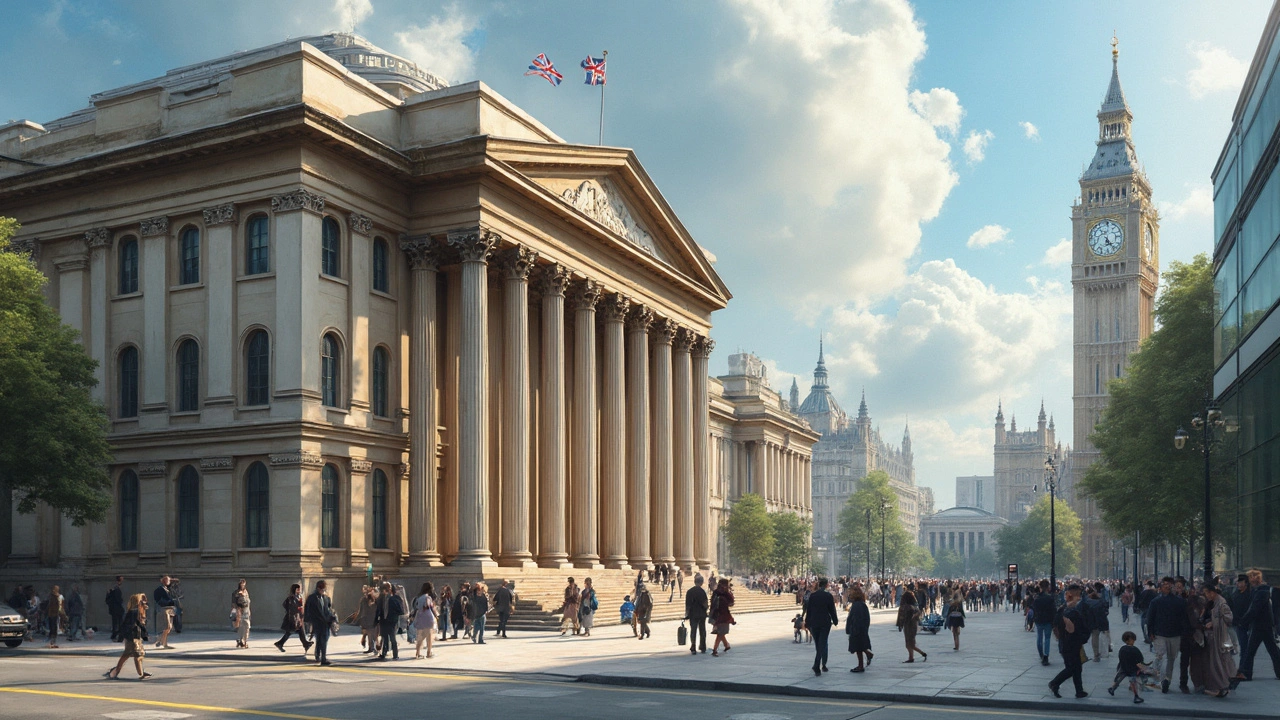Federal architecture pulls from a mix of styles, showing off not just power but also a sense of national identity. This article digs into how these buildings shape the way people experience cities, from courthouses and post offices to modern glass structures. You’ll get tips on recognizing key features and a look at hidden gems beyond Washington, D.C. We’ll also break down why these spaces feel so official and how they've changed over time. Expect plenty of practical insights if you want to spot federal design in your own city.
Government Buildings: Styles, Features, and Why They Matter
Government buildings are where design meets public life. They house courts, city halls, ministries, and civic centers. Good design balances dignity, security, and openness. If you want to spot a government building, look for grand entrances, clear symbols, and durable materials like stone, brick, or concrete.
Styles say something about power and values. Greek Revival and Beaux-Arts use columns and symmetry to convey stability. Colonial and Georgian buildings show ties to local history and place. Baroque buildings often use drama and ornament to impress. Modern movements like High-Tech and Neo-Futurism signal progress with glass, steel, and exposed systems.
Materials and details matter. Thick walls, heavy doors, and small windows often aim at protection. Public wings and assembly halls use balconies, domes, or large skylights to admit daylight and crowds. Sculptures, reliefs, and inscriptions hold civic messages. Look for coats of arms, carved dates, or plaques that explain a building's purpose.
How government buildings change over time. Many older halls get adaptive reuse so they stay useful. That can mean updating HVAC, adding ramps, or fitting modern safety systems while keeping facades intact. Articles on this site look at preservation tips for Greek Revival and Beaux-Arts examples and show how to modernize without losing character.
Security versus accessibility is a real tension. Architects use subtle layers: setbacks, landscaping, and planters can protect without looking like a fortress. Transparent lobbies and clear signage improve wayfinding. Design that welcomes people while keeping them safe makes civic spaces more active and trusted.
Sustainability and tech in civic design. Ancient Roman ideas like passive cooling still inspire modern solutions. High-Tech and Neo-Futurist buildings use smart systems, solar glass, and energy-efficient envelopes. Retrofit projects often use insulated glazing, LED lighting, and efficient controls to cut costs and carbon.
How to read a government building on a city walk. Notice the approach: is it pedestrian friendly or car centered? Check scale: domes and large steps usually mean a public assembly. Materials tell age and budget. Nearby plazas, memorials, or wide boulevards signal intentional civic planning. If you enjoy design, try spotting Beaux-Arts symmetry or constructivist angular forms next time you pass a courthouse or town hall.
Need quick resources? Our articles cover styles from Ancient Roman techniques to Renaissance Revival, Beaux-Arts, Greek Revival, and contemporary movements. Each piece includes photos, key features, and examples to help you identify and appreciate public architecture.
Whether you work in planning, design, or just love buildings, paying attention to government architecture reveals how a city sees itself. Look closer and you’ll read history, politics, and future ambitions in stone, glass, and steel.
Want to learn more? Start with posts on this tag—read about Beaux-Arts facades, Greek Revival columns, Renaissance Revival planning, and Ancient Roman construction tricks. Use the photo galleries to train your eye. If you're planning a project, pay attention to scale, daylight, and materials. Small choices make big civic effects. Follow Architectural Artistry Chambers for updates and case studies. daily inspiration.

